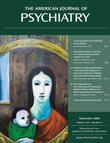This book has great strengths in covering the field of psychopharmacological treatment of autism spectrum disorders. The chapters reviewing medications, including the use of selective serotonin reuptake inhibitors (SSRIs), atypical antipsychotics, stimulants, anticonvulsants, mood stabilizers, and even cholinesterase inhibitors, are very thorough with a balanced discussion of the latest research. This information is extremely useful for the clinician and the researcher, and the authors have made an effort to discuss the most recent literature in press in 2007, so that it is remarkably current, particularly for a book. There are helpful tables to facilitate dosing in most of the chapters, so information is easily accessible. There are excellent discussions on mechanisms of action; particularly notable is Chapter 4, which covers anticonvulsants.
The chapters on behavioral and educational interventions individually cover applied behavioral analysis, Greenspan’s floortime approach, Treatment and Education of Autistic and Related Communication-Handicapped Children (TEACCH) methodology, and therapy focused on peer interactions, all by authors who have built these fields with numerous publications. They are well written, with an excellent synthesis of the literature in each of these areas. What is missing is a synthesis that brings in other contributions, such as the Denver model, developed by Sally Rogers and colleagues, or broader directions of educational endeavors, such as the use of assistive technology.
The weakest part of this book is the medical workup of autism, which is covered in Chapter 1. There are basically no details regarding the physical examination or laboratory studies, and both are mentioned to be done only “when indicated.” Actually, such studies are always indicated in autism, but there is little guidance regarding the newest studies that are indicated in the thorough workup of autism, and the reader must look elsewhere to find this information. There is little to no coverage regarding the latest genetic studies in autism (e.g., the yield of comparative genomic hybridization arrays in the genetic workup or subtyping of autism). Advances such as methyl CpG binding protein ( MECP2 ) mutations, chromosome 15q duplications, or the association of the fragile X premutation and autism are not covered. These deficiencies carry over into the chapter on future directions, because targeted treatments that are being developed for certain subgroups of autism, such as the use of mGluR5 antagonists in fragile X syndrome, may have significant benefits in autism in general, but they are not mentioned. A greater emphasis should be placed on identifying these genetic subgroups of autism and the neurobiological advances that have led to targeted treatments.
The chapter on complementary and alternative medicine treatment is well written and covers a broad range of controversial therapies, with helpful information for the clinician to share with families and where to search on the web for the latest valid information.
Overall, I highly recommend this book for both clinicians and researchers, particularly for the treatment chapters regarding psychopharmacological, complementary and alternative medicine, and behavioral interventions. In a field fraught with controversy, this book adds clarity in a compact and well-written format. This should be read by all who take care of children with autism.

